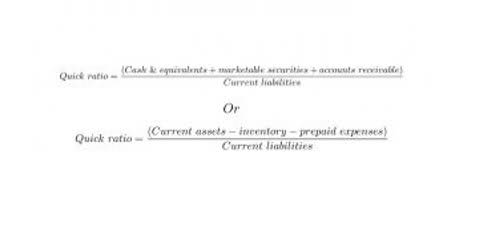
A well-defined credit policy sets the foundation for effective credit management. This policy outlines the terms and conditions under which credit is extended to customers and serves as a guide for all credit-related decisions. To contextualize the direct write-off method, let’s consider a small web design agency.

What is the Direct Write-off Method for Bad Debts?
- When I request that we write them off as bad debt, the president of the company keeps telling me he wants to leave them on there longer.
- The direct write off method violates GAAP, the generally accepted accounting principles.
- This means that when the loss is reported as an expense in the books, it’s being stacked up on the income statement against the revenue that’s unrelated to that project.
- The aging method is a modified percentage of receivables method that looks at the age of the receivables.
- This entry does not affect the income statement at the time of write-off because the expense was recognized previously when the allowance was created or adjusted.
Bad debt, or the inability to collect money owed to you, is an unfortunate reality that small business owners must occasionally deal with. You’ll need to decide how you want to record this uncollectible money in your bookkeeping practices. This better matches expenses with revenue and gives you a more accurate picture. Sometimes, people encounter hardships and are unable to meet their payment obligations, in which case they default.
Do I need a separate account for bad debt expense?

When specific accounts are deemed uncollectible, they are written off against the allowance. To compensate for this problem, accountants have developed “allowance methods” the direct write-off method is used when to account for uncollectible accounts. Importantly, an allowance method must be used except in those cases where bad debts are not material (and for tax purposes where tax rules often stipulate that a direct write-off approach is to be used).
Small Businesses
Debts are written-off at the time the debt is determined to be uncollectible. They arise when a company extends too much credit to a customer that is incapable of paying back the debt, resulting adjusting entries in either a delayed, reduced, or missing payment. The Direct Write-Off Method is often used by small businesses that do not have significant amounts of receivables or where the impact of bad debts is minimal. Its simplicity and ease of implementation make it a practical choice for businesses with straightforward accounting needs.


So it’s usually only used for internal books or by companies not bound by Generally Accepted Accounting Principles (GAAP). Usually, the longer a receivable is past due, the more likely that it will be uncollectible. That is why the estimated percentage of losses increases as the number of days past due increases. Calculate bad debt expense and make adjusting entries at the end of the year. In the direct write-off method example above, what happens if the client ends up paying later on?
- Armed with the insights and best practices from this series, you can confidently navigate the challenges of credit risk and build a healthier, more robust financial future.
- Once it’s established that the payment is unlikely to come through, the business records the uncollectible amount as a bad debt expense.
- Following up on outstanding invoices is essential for preventing overdue balances from becoming bad debts.
- Among these, the direct write-off method stands out as a straightforward way to manage and record bad debts when they become irrecoverable.
- The matching principle dictates that expenses should be recorded in the same period as the revenues they helped generate.
- It is waived off using the direct write-off method journal entry to close the specific account.
- However, with the direct write-off method, the bad debt expense is not matched with the revenue it helps generate.

Using the direct write-off method can help your business easily manage bad debt if you rarely get uncollected payments. In this article, you’ll learn how to use the direct write-off method for your business and the potential advantages and disadvantages of a direct write-off. A written-off debt can still Bookkeeping vs. Accounting be collected if the customer later pays the outstanding balance.
